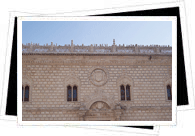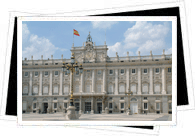
Hailing from Italy, Europe's architectural all-star, Renaissance architecture swept into Spain and dominated the scene throughout the 15th and 16th centuries. The Italian High Renaissance was essentially a classical revival. Inspired by the ancient Roman and Greek constructions, clean forms and classic elements stemming from the concepts of rationality, balance and logic were brought back to the forefront- columns, simple shapes, symmetry, etc.
However, Spain, having always been partial to decoration, didn't take to the pure Renaissance architecture as easily as other European countries. For this reason, Renaissance architecture in Spain is divided into two sub-categories: Plateresque and Escorialense. The earlier part of the Renaissance was dominated by the Plateresque strain, in which Gothic, Mudéjar and Renaissance motifs were integrated into an intensely decorative surface style.
The extreme decoration of Plateresque soon gave way to the extreme lack of decoration of Escorialense. This second trend became more prevalent during the second half of the Renaissance and was headed up by Juan de Herrera, architect of El Escorial- the largest construction in Spain and the building after which the trend is named.Featuring monumental proportions, clean forms and minimal decoration, the Renaissance-Escorialense style is known for its somber austerity.

Yet another Italy-born style, the dramatic Baroque movement was largely a reaction to the classical, strict forms of the Renaissance. Spain easily adapted to the sensational Baroque architectural trend, as it was just the type of extremely decorative style that Spain so loved.
Baroque architecture was used in Spain as a means of showing off power and control as well as a way to draw attention to the Christian presence- particularly throughout Andalucía, where the final strongholds of the Islamic empire were located.
The straight lines, simple forms and classic aesthetic of the Renaissance were replaced by curves, over-the-top decoration, twisting columns and highly stylized façades. Classical shapes - such as the semicircular or triangular moldings over windows - were broken and reformed in creative ways.
A sub-style called Churrigueresque also emerged, which took this decorative craze to unseen levels. Like the Renaissance's Plateresque style, Churrigueresque focused on surface decoration, not on strucure. Exaggerated sumptuousness, light and shadow effects and detailed moldings dominated building façades, giving them the appearance of sculpted tapestries.